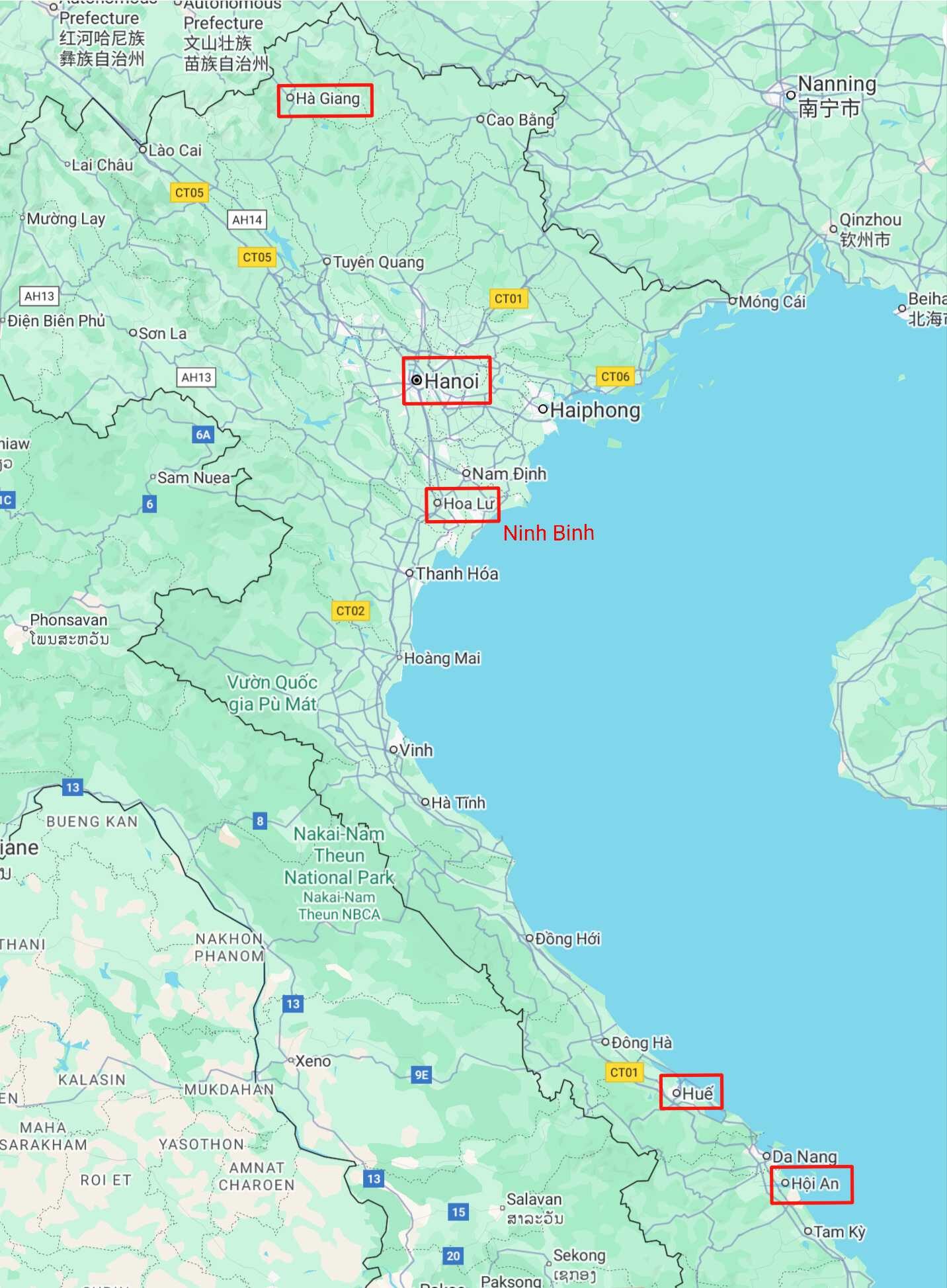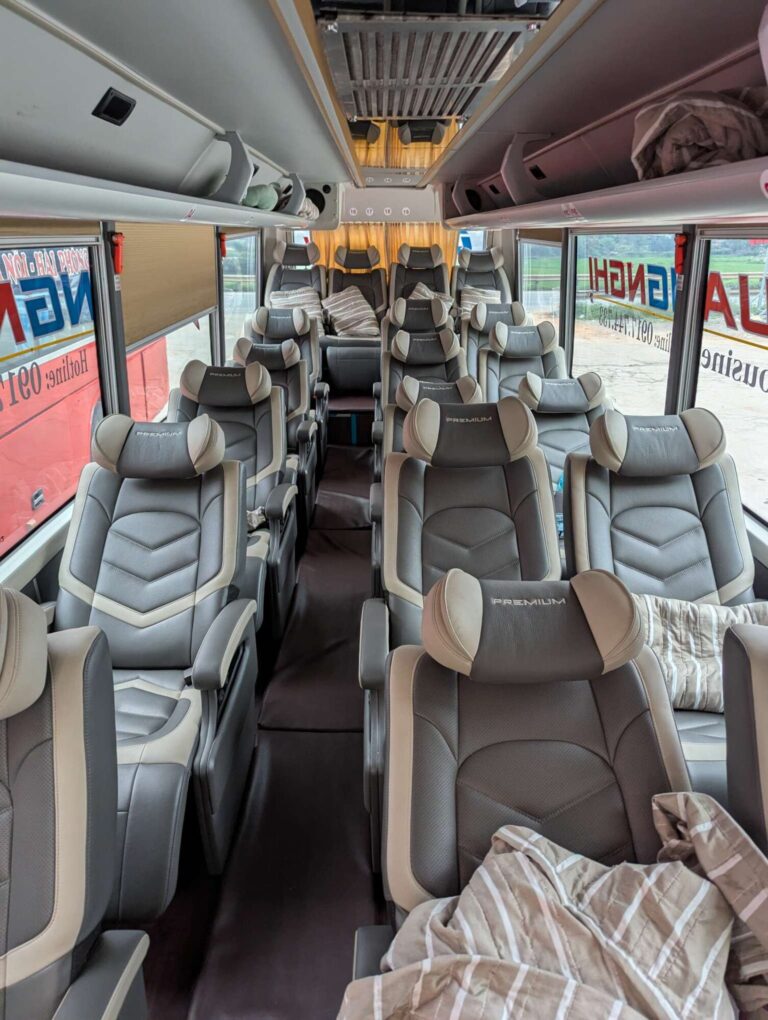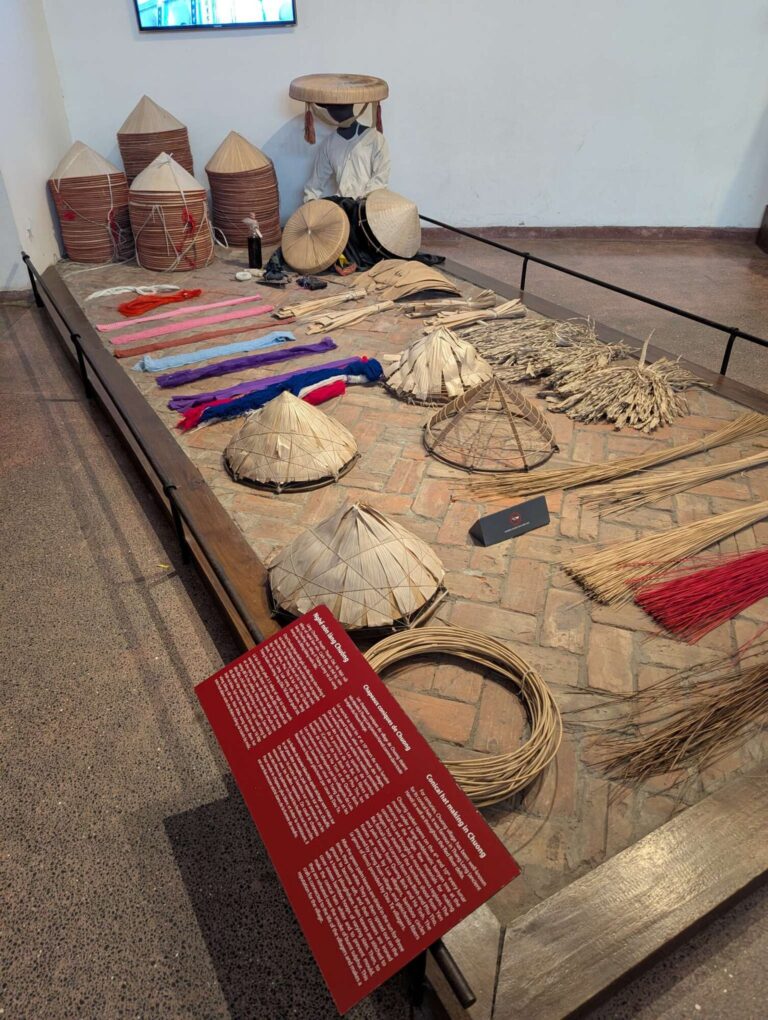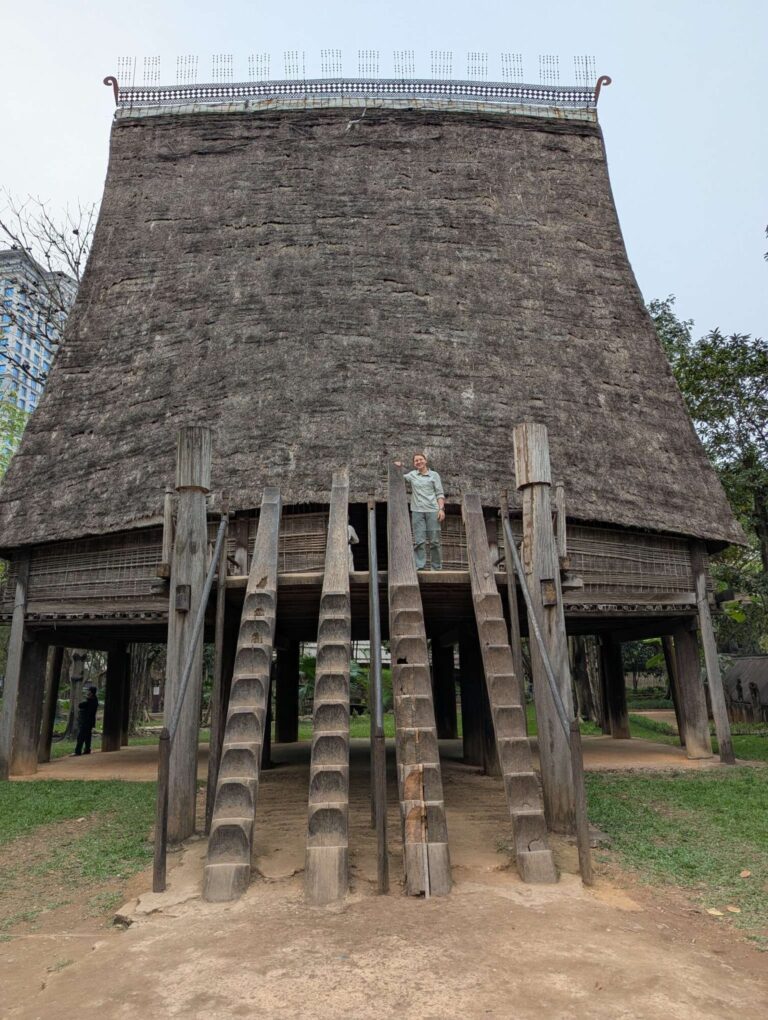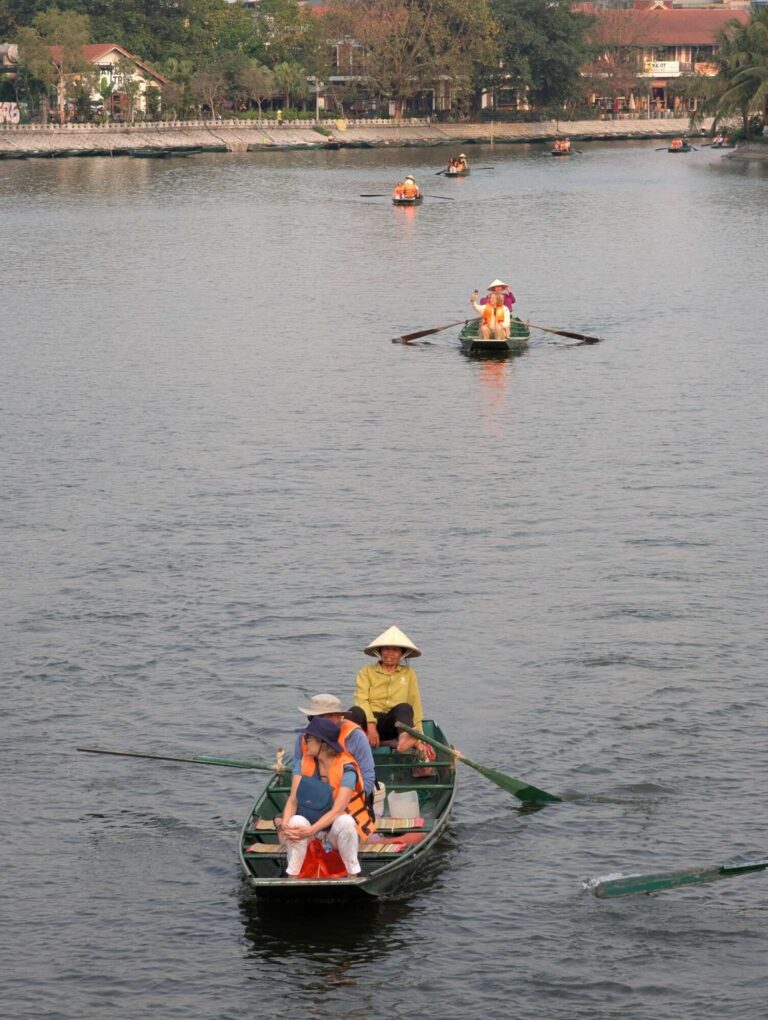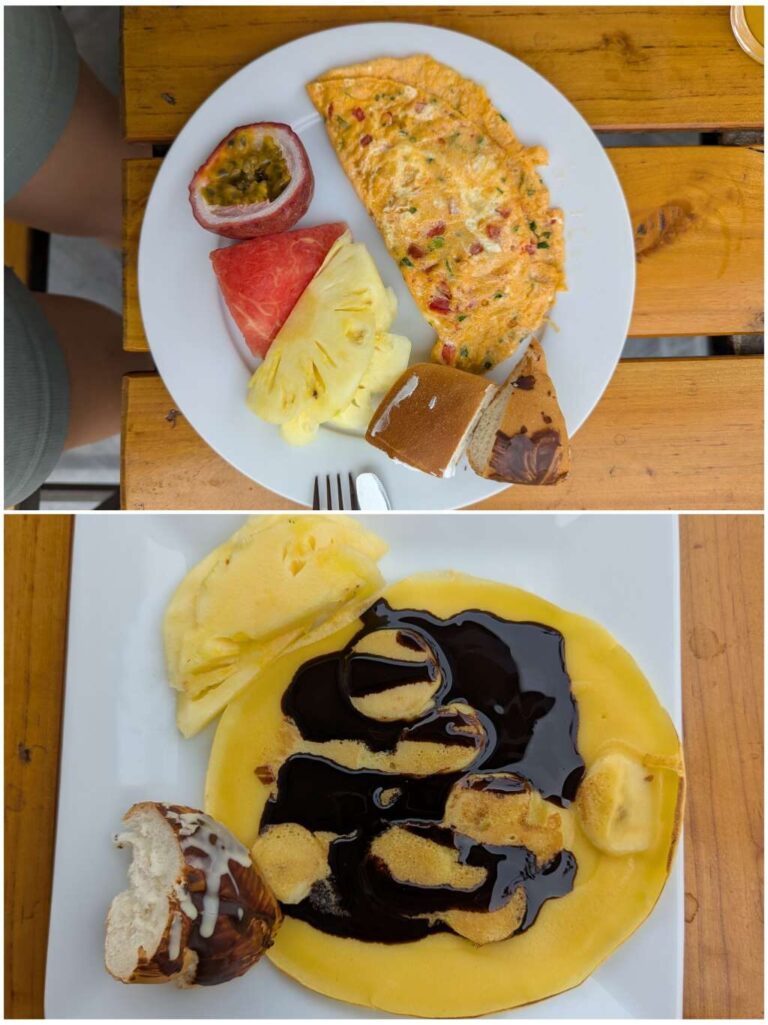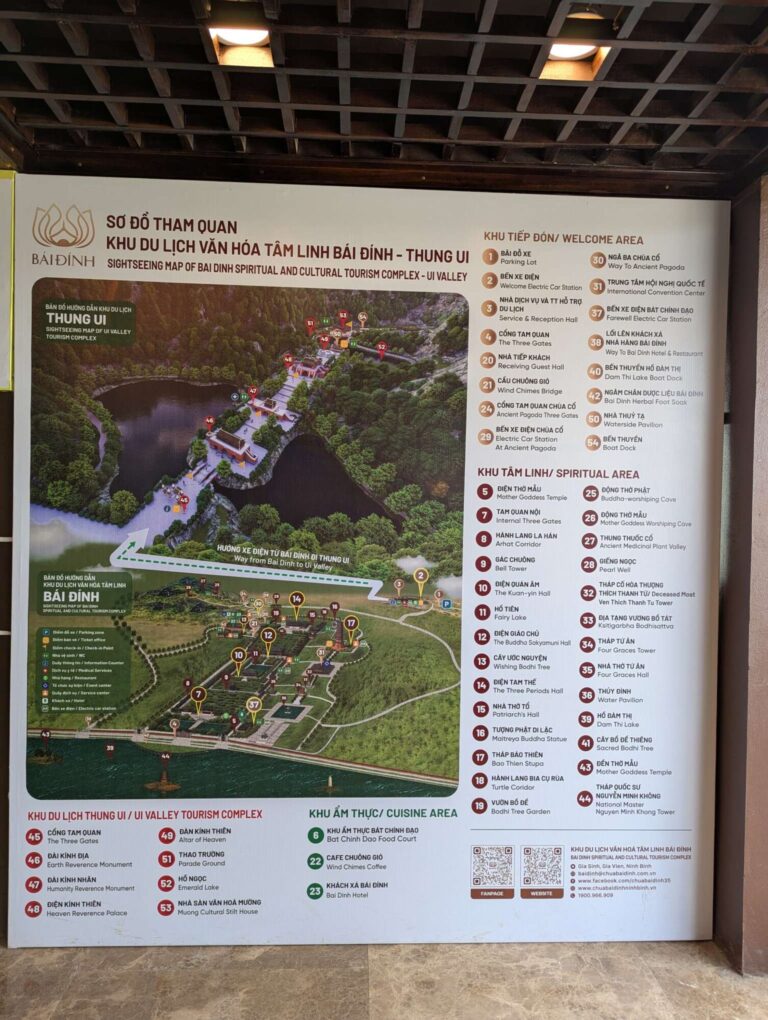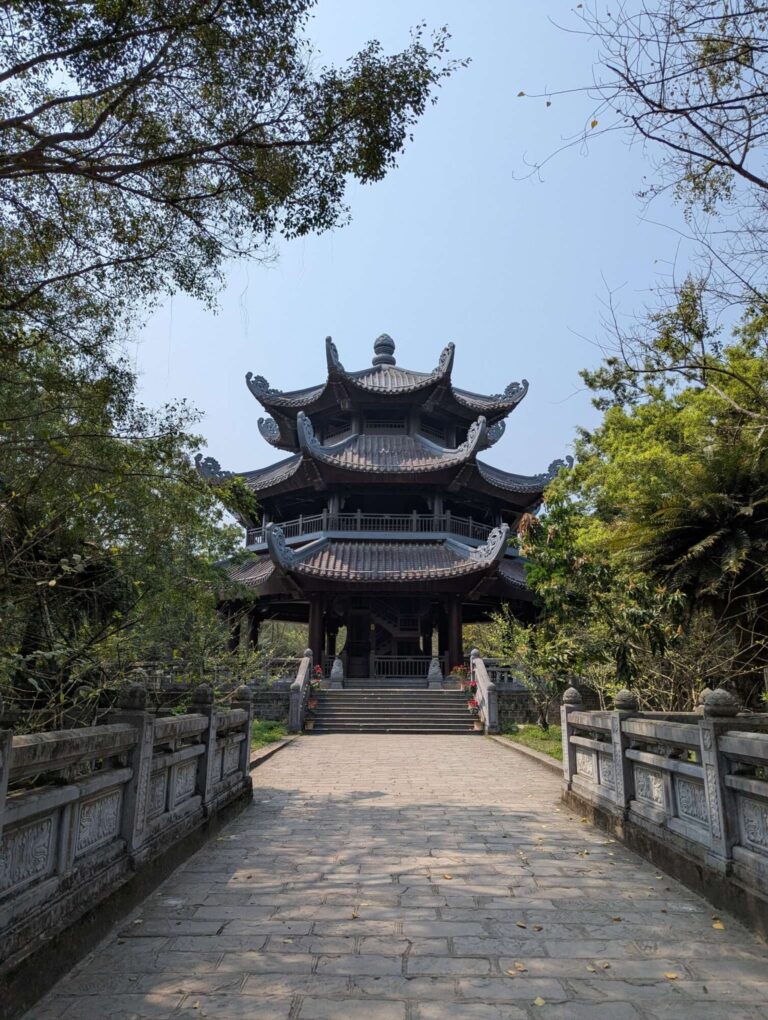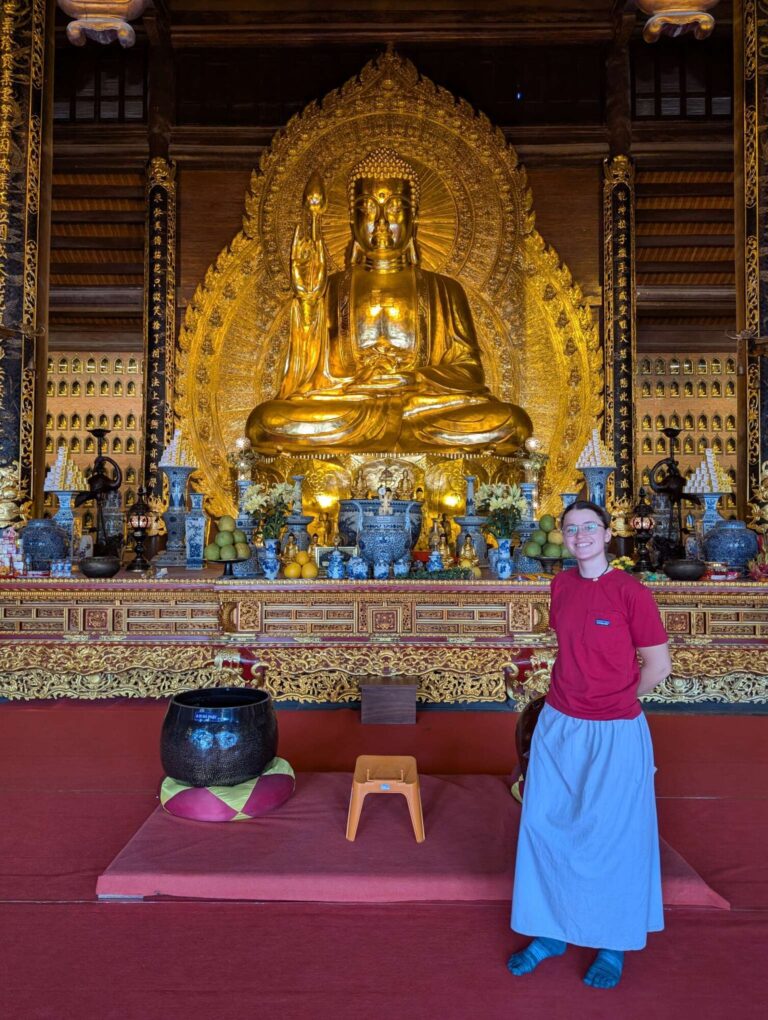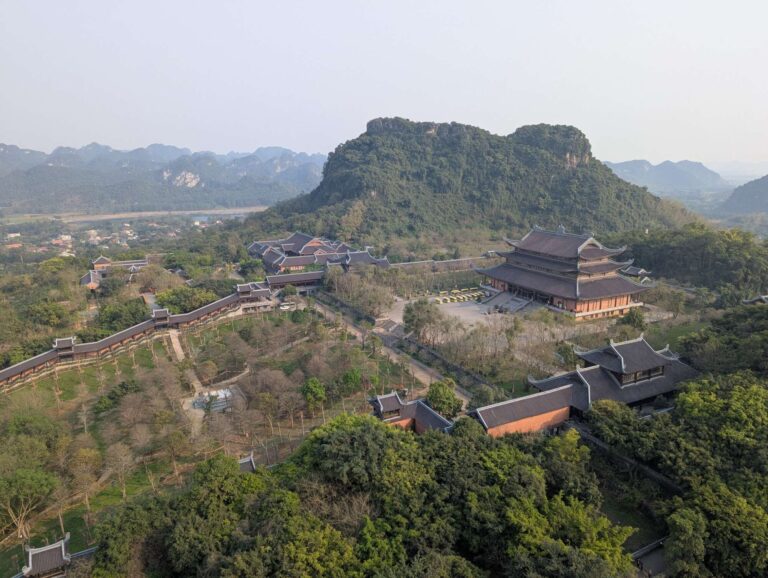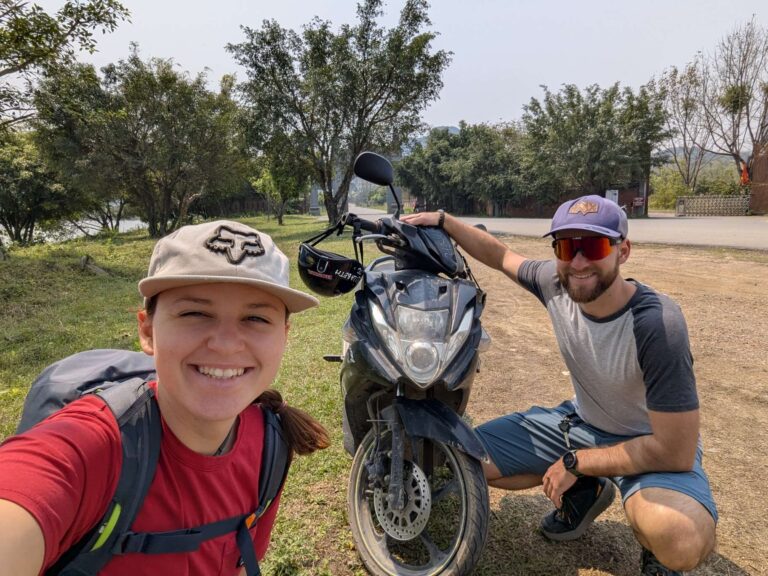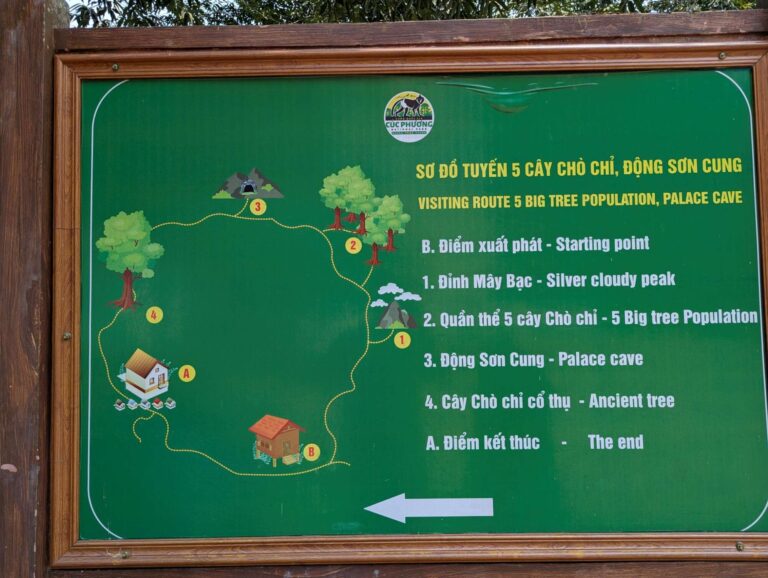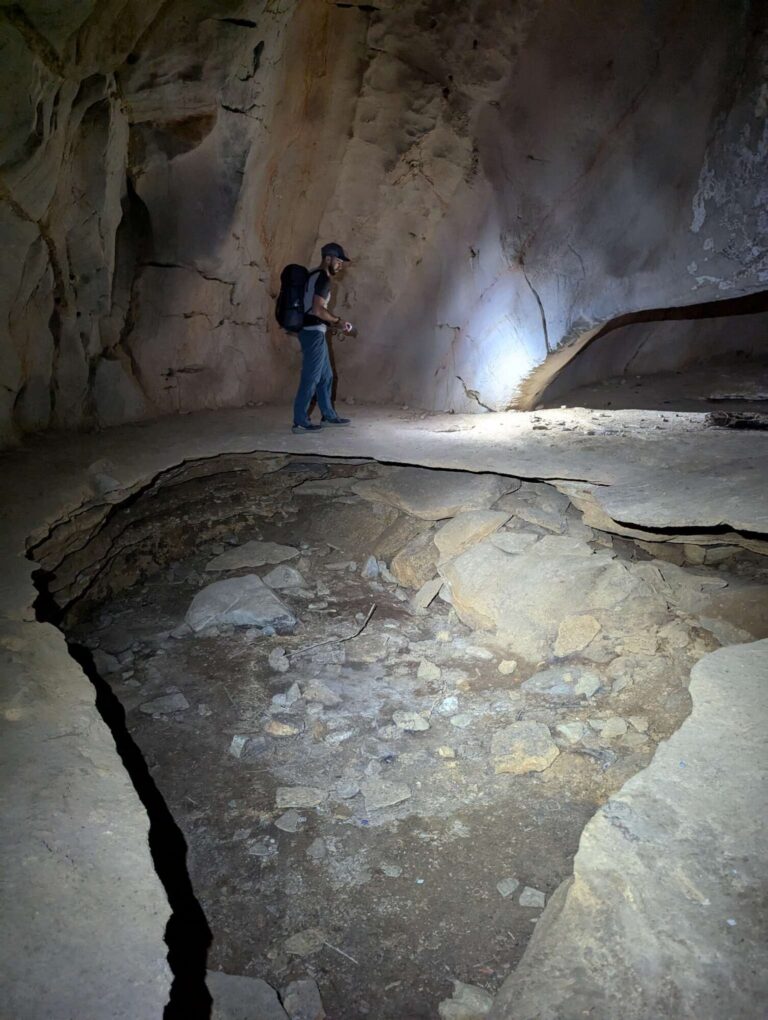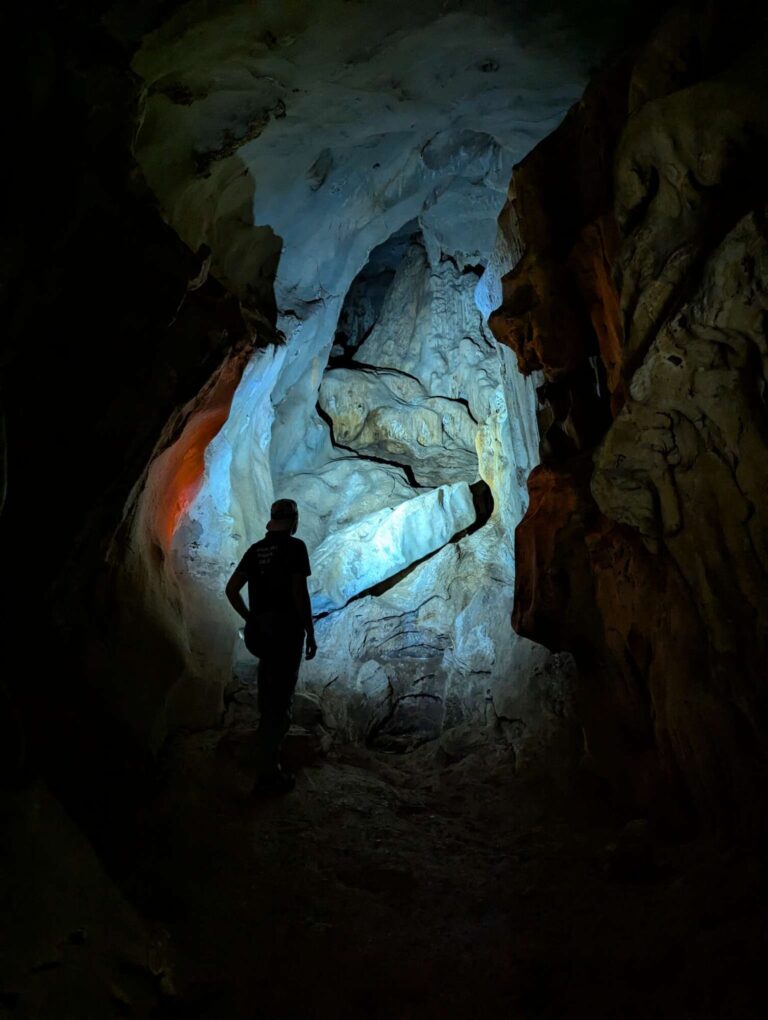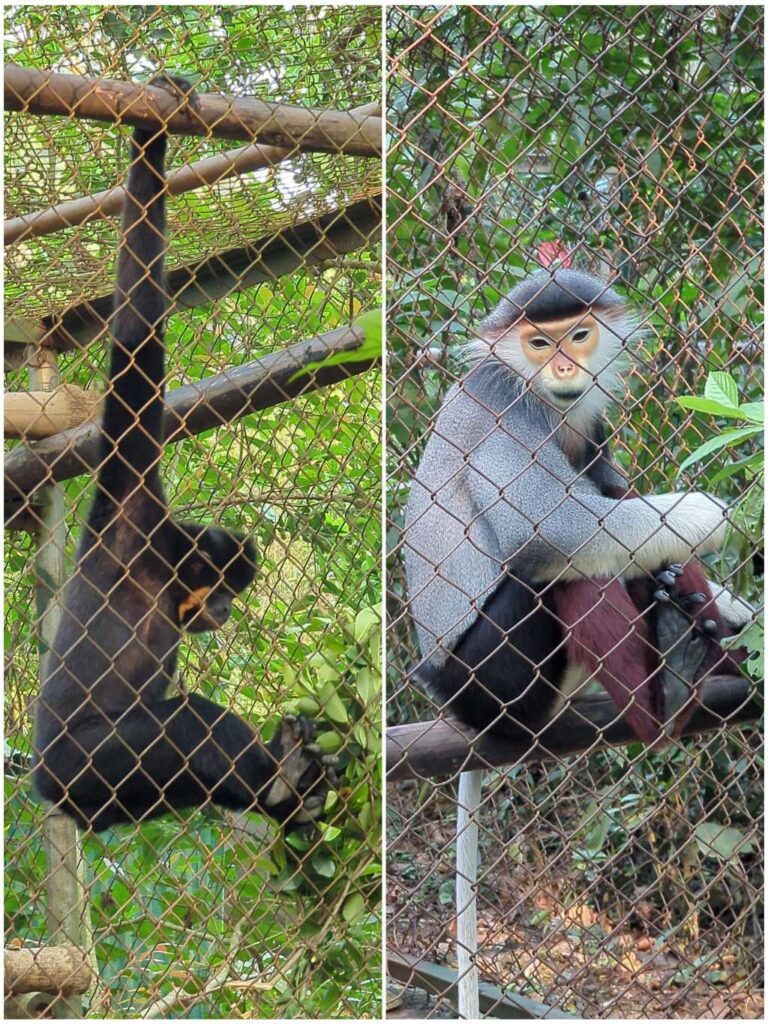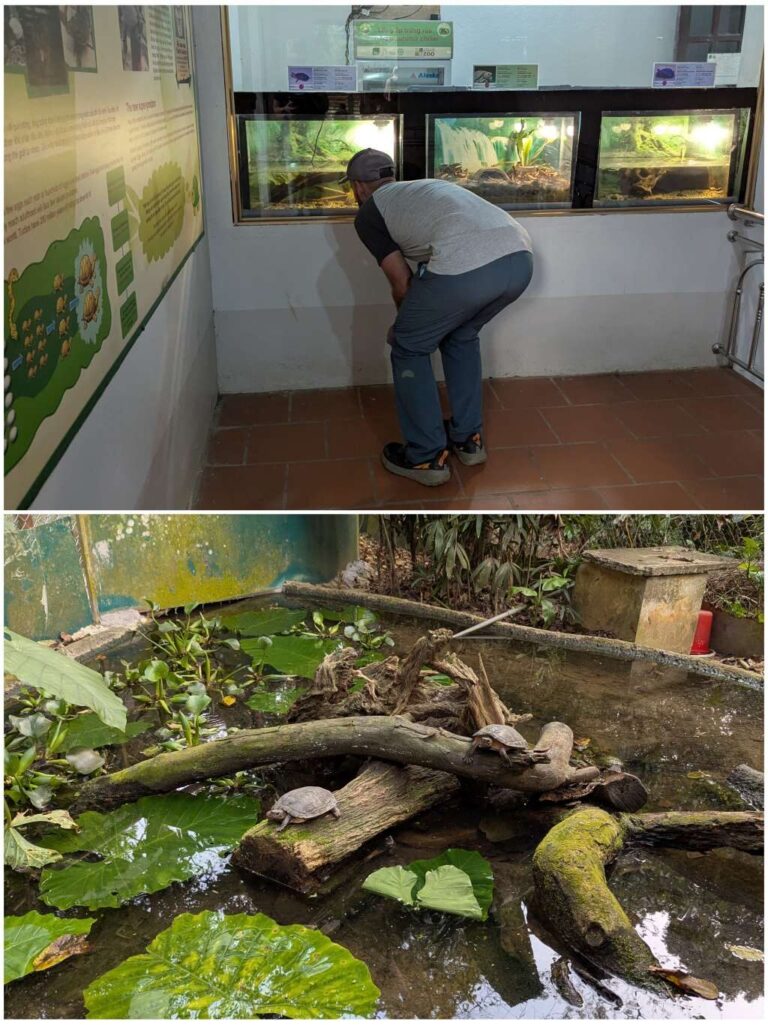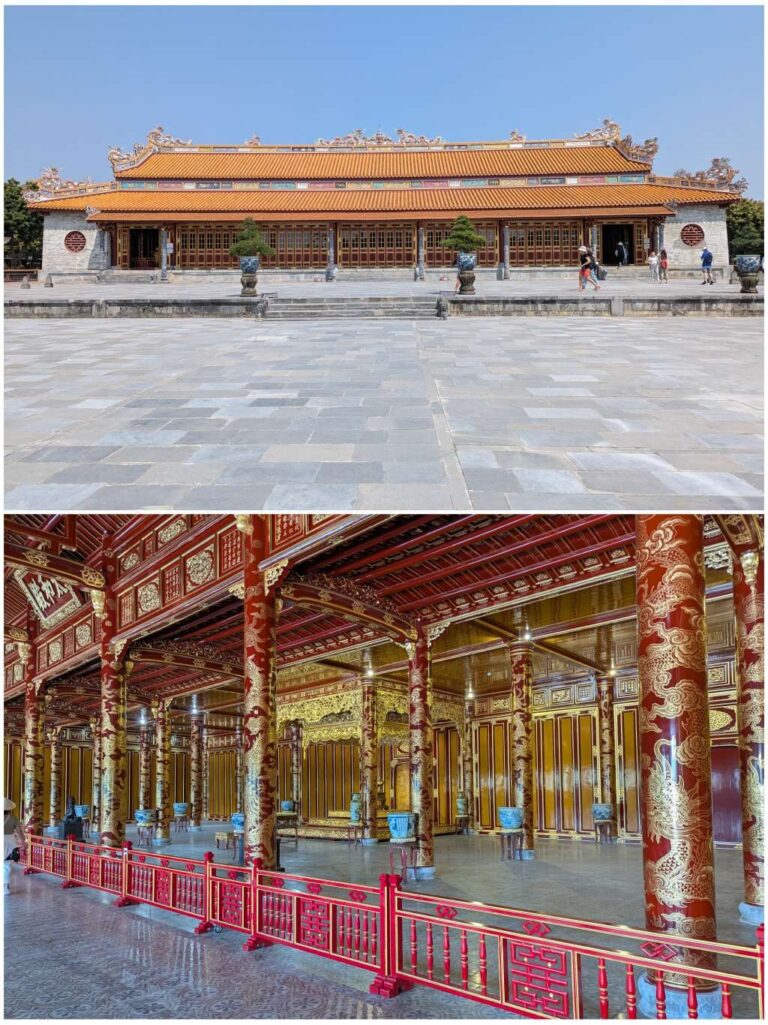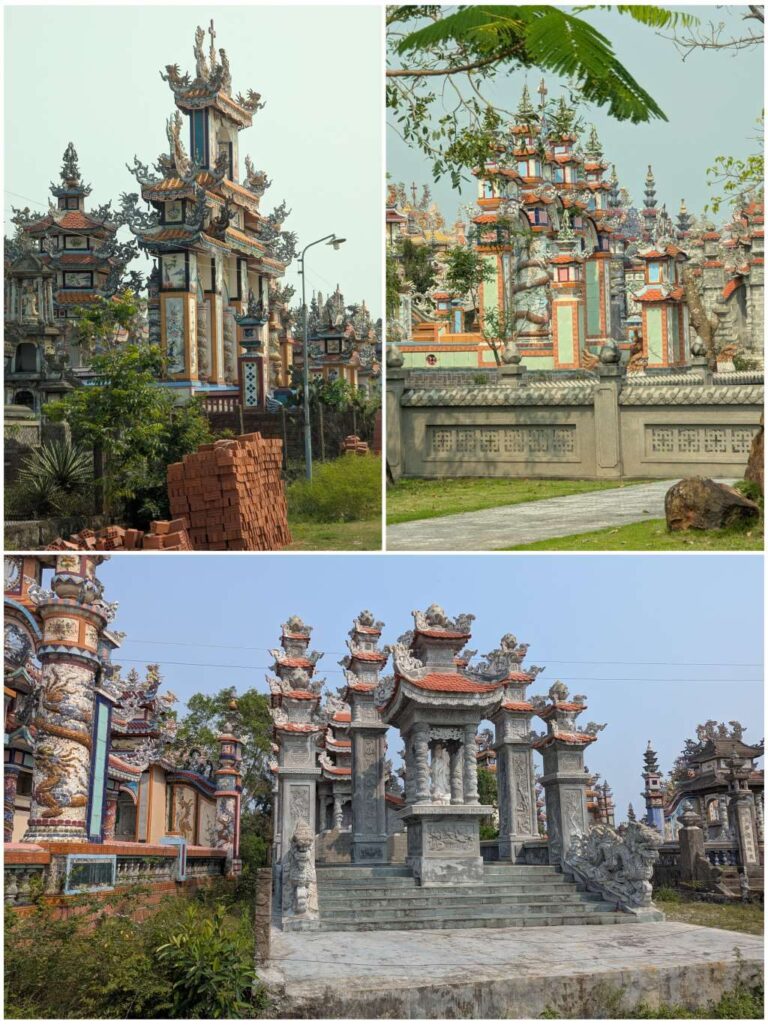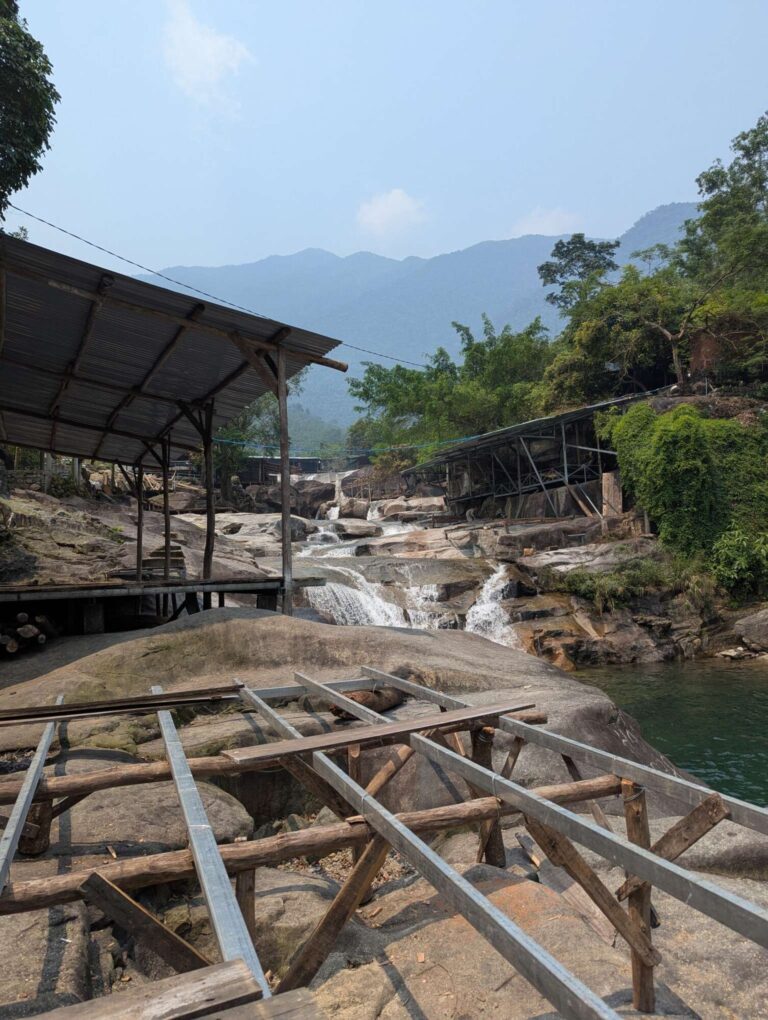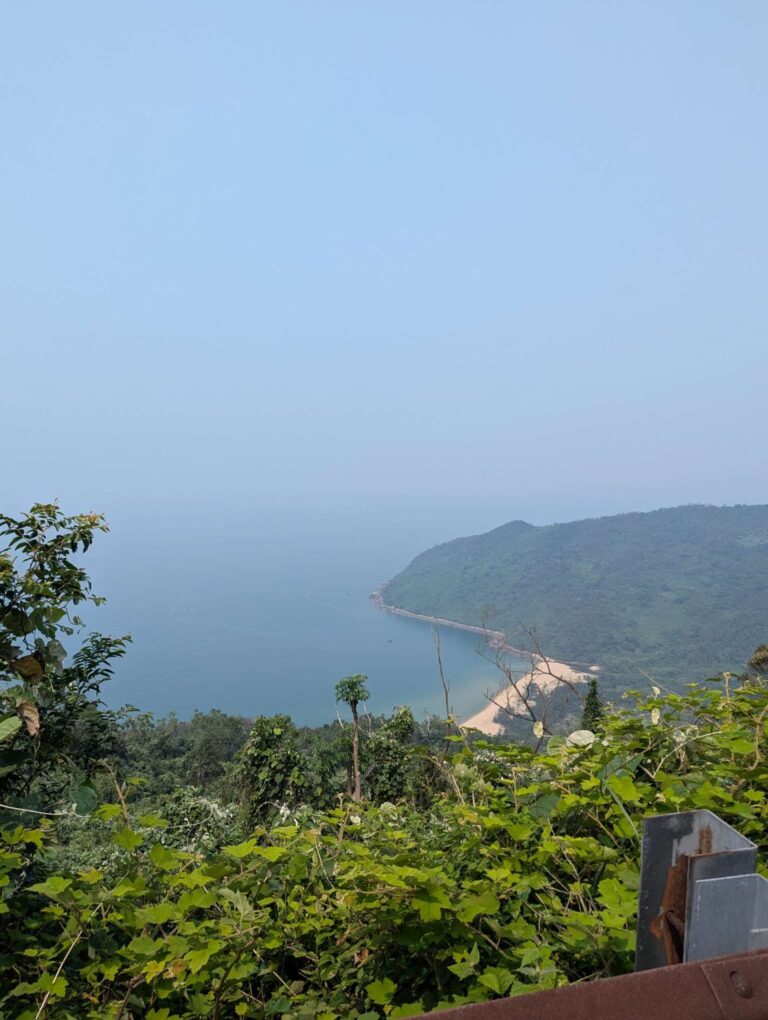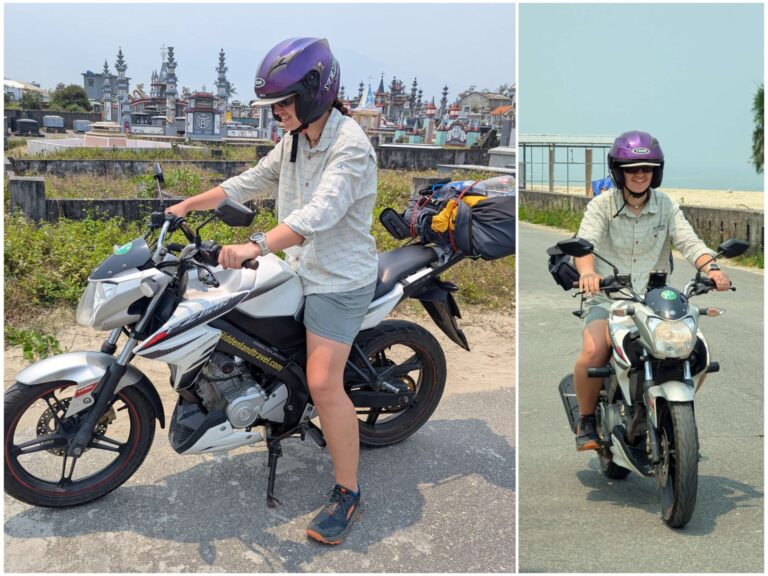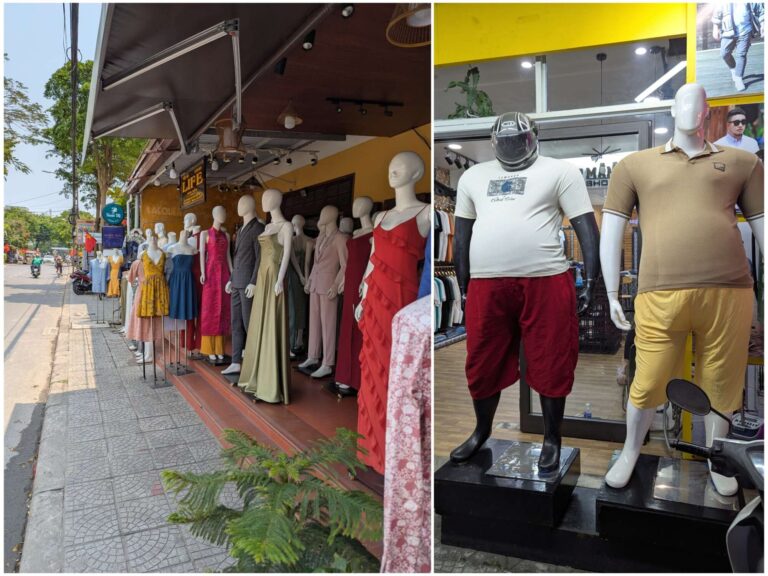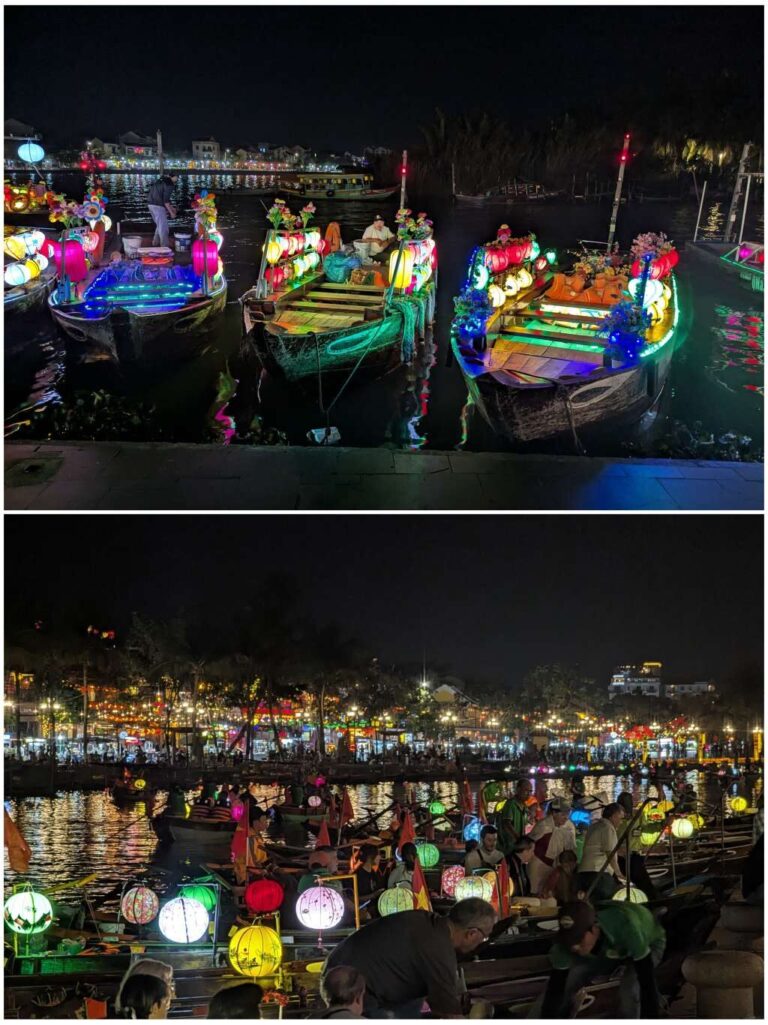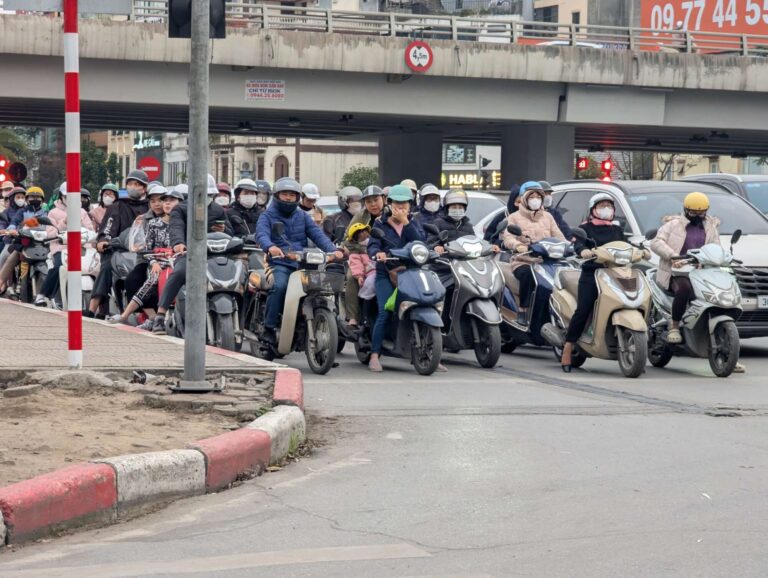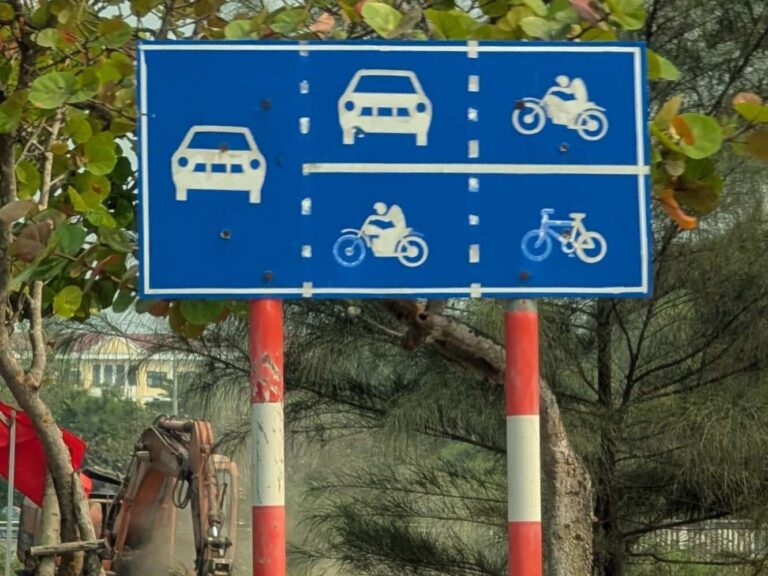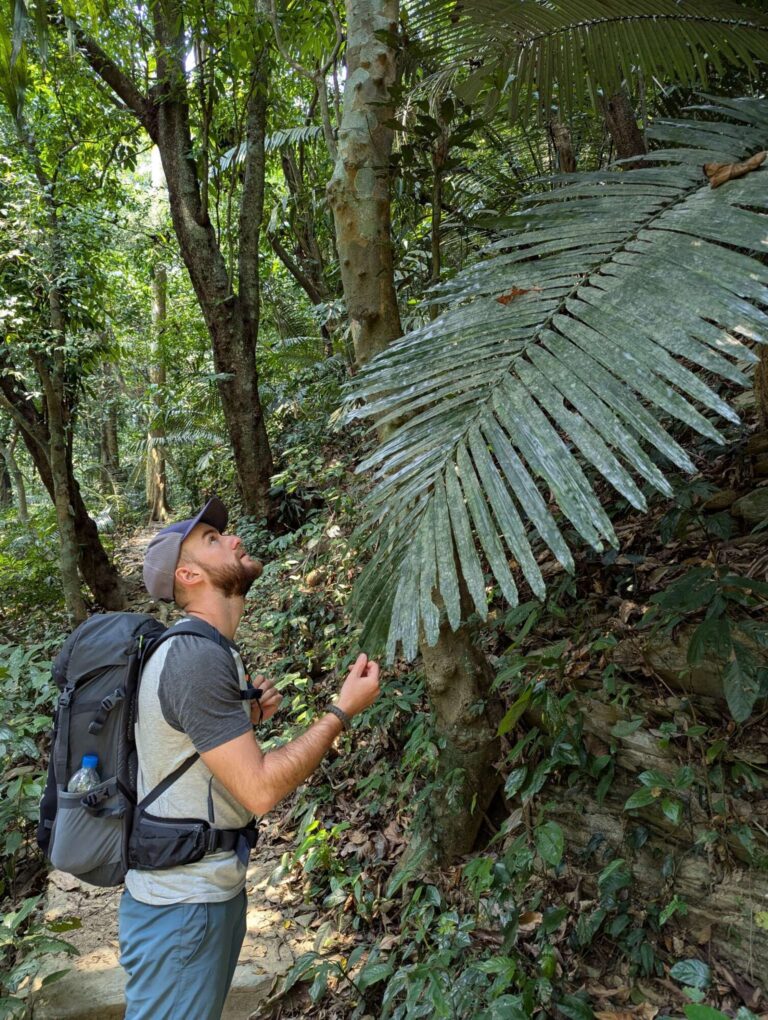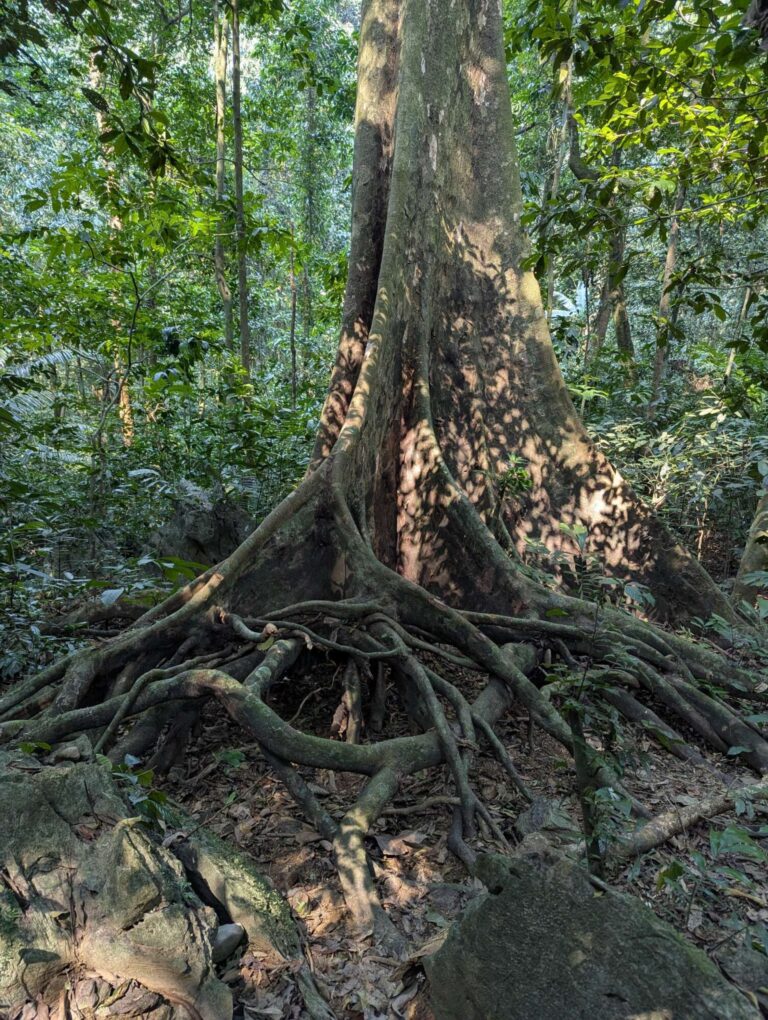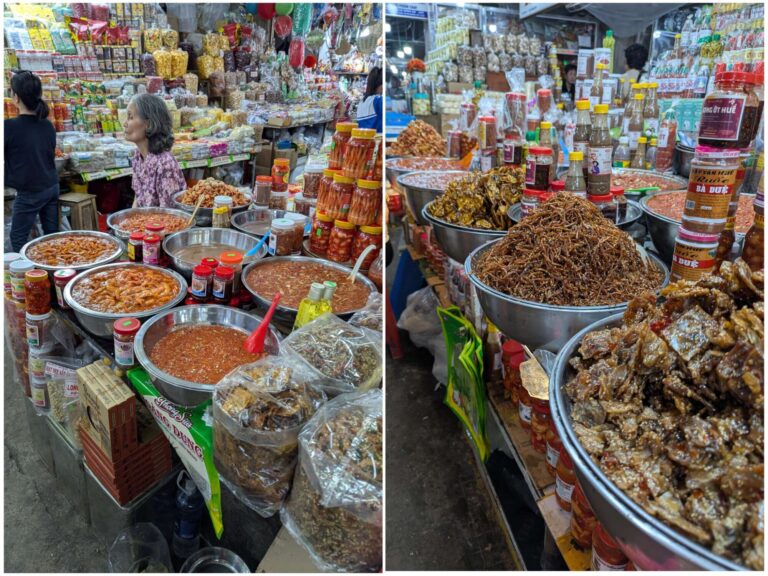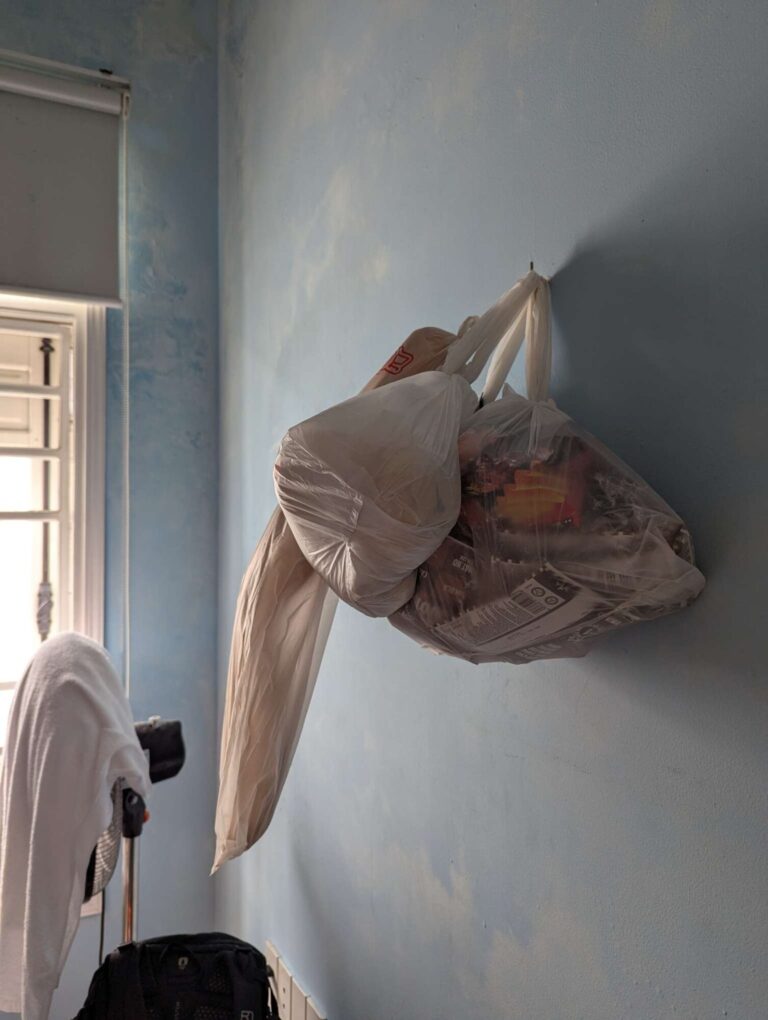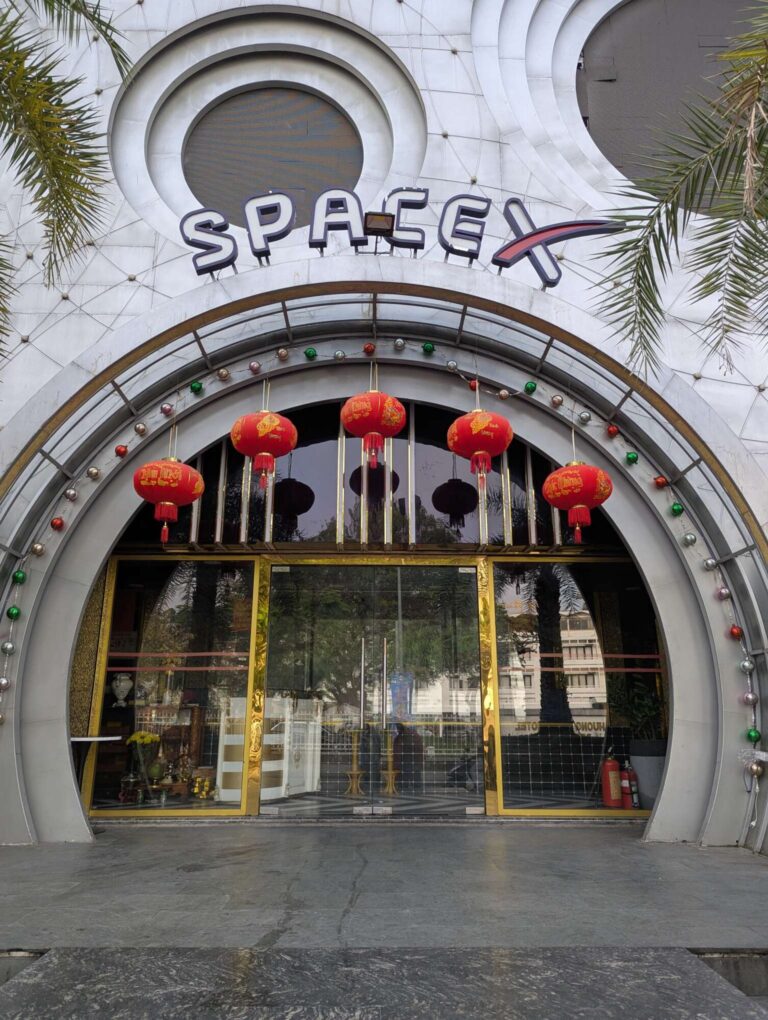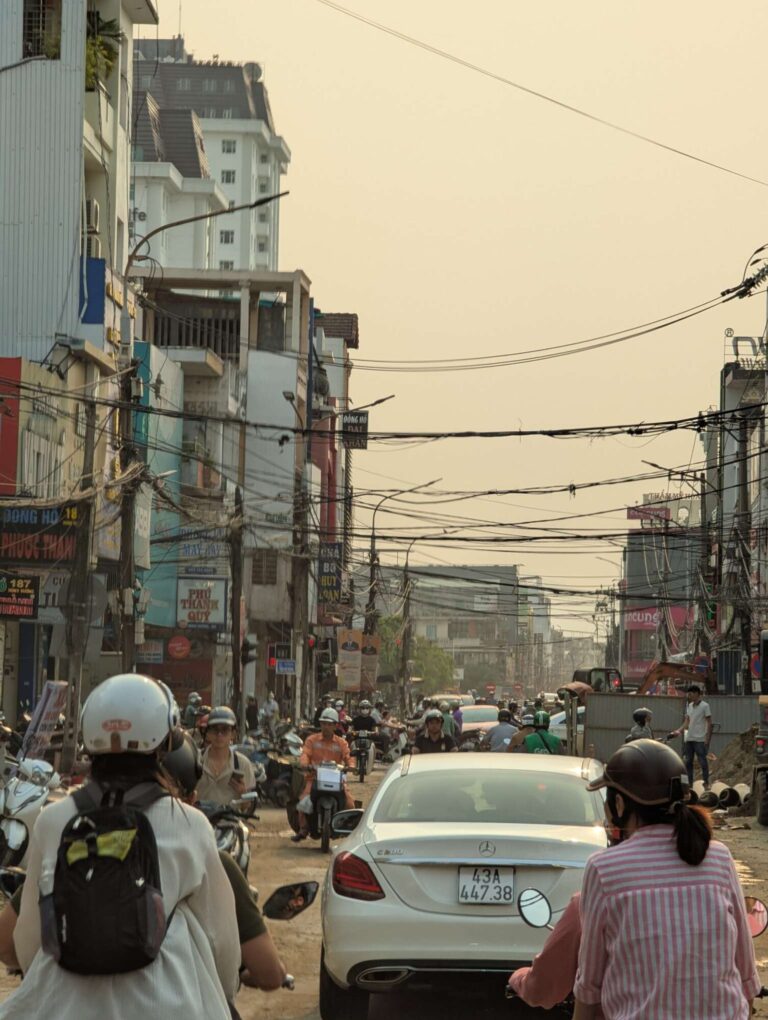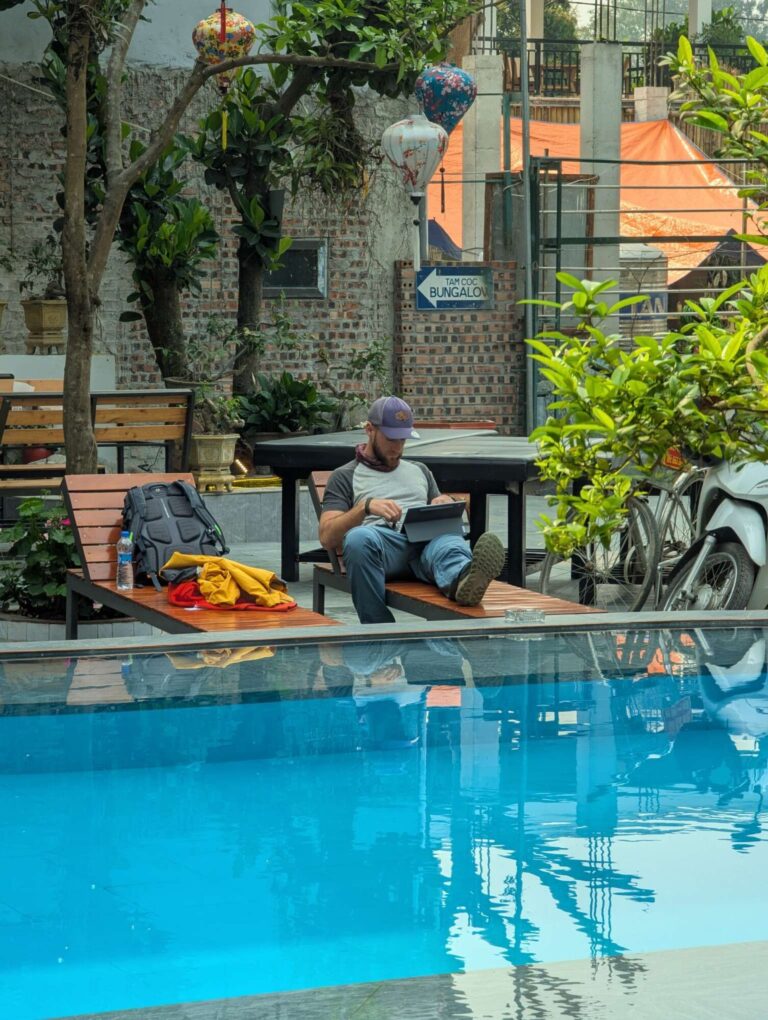Tuesday, 18 March 2025 – Monday, 31 March 2025
The first half of day 16 was dedicated to migration. We had a bus at 7 AM from our hotel in Ha Giang back to Hanoi, Vietnam’s capital city. We got to the outskirts of the city around noon, then it took us around 1 hour to get into the center, where we got off the bus. We went back to the same hostel we already knew from before and bought two nights there for 25€. On the way to the hostel, we decided to treat ourselves to a more-than-usually expensive banh mi (sandwich), which looked nice and had good online reviews. We will only say that it was the worst banh mi we’ve tried, and because of it, we decided to avoid the meat for the rest of our trip. The quality of meat in general is lower than we were used to, but at that specific place, it was so bad that we just threw it away. There are still plenty of non-meat options like eggs, vegetables, or tofu, and we decided to give them a chance.
The second half of day 16 was centered around food and drinks. Towards the evening we went to the fruit market and got some good deals on the pre-cut fruit, so we took some pineapple and papaya. To forget about our bad experience with banh mi, we went to get crepes with banana and Nutella on the street, and we were positively surprised by the portion size—we could barely eat one each. After that, we went to the beer corner in the center of Hanoi—a place known for cheap local beer called Bia Hoi. The strict center of the beer corner was packed with people and had European prices, but as we went further down the street, we found a place with beer for 40 cents per glass. We sat down, enjoyed the chaos around us, and we even made some new friends from Australia. Let’s just say that the quality and taste of the beer were what you would expect out of a 40-cent beer, but it got a bit better after the first one. When we got back to the hostel, we ate all of the papaya and half of the pineapple.
On Wednesday, day 17, we tried Grab—an Asian alternative to Uber. We made an account and ordered a car in front of the hostel; then it turned out that the hard part was finding our ride, especially in the chaos around us. The reason we ordered a Grab was to get to the Museum of Ethnology, which is around 7 kilometers out of the center, and we paid less than 3 euros for the ride. There are 54 ethnic groups living in Vietnam—the Viet (Kinh) and 53 minority groups. The museum introduces visitors to the culture of the ethnic groups, like village organization, house styles, family, society, and religious traditions. There are three main parts of the museum: a central building presenting Vietnamese culture, a building for Southeast Asian culture, and an architectural garden located outside. We enjoyed the outdoor part of an exhibition the most—seeing and going inside actual houses and buildings of different ethnic groups. Each building there was made by workers from a specific ethnic group, with traditional techniques and mimicking the style of their real buildings. And which one was our favorite? Definitely Bahnar Communal House, a 19-meter-high building that was built by 40 Bahnar people from Kon Rbang Village, modeling the building after an actual village communal house.
It was almost 5 PM when we decided to go back into the center of Hanoi. The traffic was terrible; it must have been rush hour, so we decided to just walk back instead of waiting for a Grab and getting stuck in traffic. Since we were out of the city center, the sidewalk was actually available for pedestrians instead of being taken up by street vendors, so it was much easier to walk. It felt almost safe if we don’t count an occasional motorbike driver that took a shortcut over the sidewalk to avoid a traffic jam. After almost two hours of walking, we were back at our hostel.
We had booked a limousine bus from Hanoi to Ninh Binh for the morning of day 18. Two hours of driving sounds like nothing compared to our previous bus rides, but this one was full of adrenaline. It seemed like our driver was either in a hurry or he was getting paid per minute saved. We were passing every car on the highway, and our minibus was jumping over every bump on the road. Iris was sitting at the back of the bus, and she was lifted off her chair every time the bus hit something on the road. We were glad when the ride was over.
Our destination was Tam Coc, a small town in Ninh Binh province, around 7 kilometers outside the city of Ninh Binh. This province is known as “Halong Bay on land” because of the similar rock formations, but it’s definitely less crowded.
The Tuan Ngoc Hotel that we had booked in Tam Coc was a pleasant surprise. It is family-run; everyone working there was extremely kind, the rooms were nice, and there was a billiards and swimming pool outside. And the breakfast we got there was probably the best one we had so far—we got fresh omelet, pancakes with banana, fried noodles, rice, fruits, vegetables, toasted bread, and fruit juices. It was a self-serve buffet, running from 7 to 10 AM, which meant that we could easily do two rounds of breakfast if we got to the first one early enough!
We rented a cheap automatic motorbike in our hotel on day 19 for only 5€ per day. First, we drove a bit over half an hour to a big Buddhist temple, Bai Đinh Pagoda. Since we’re writing this blog in the future, constantly behind schedule, we can say that it was our favorite temple on the whole trip. Even though the temple isn’t very old (some parts of it are still under construction), it was incredibly impressive. The complex is vast and beautifully maintained, with grand staircases, towering statues, and quiet courtyards that invite you to slow down and explore. It felt peaceful despite its scale, and we were surprised by how much there was to see.
There was a conveniently located 2-lane road next to the temple, with almost no traffic. It was the perfect place for Iris to try and ride a motorbike for the first time. Also, starting out on an automatic motorbike is much easier to avoid having to deal with a clutch and changing gears. Over an hour later, Iris finally had enough, and we went back to the hotel.
Day 20 was dedicated to Cuc Phuong National Park—a place for hiking, exploring caves, enjoying nature, and watching animals. With 307 bird species, 133 mammals, 122 reptiles, and more than 2000 different plants, this national park is one of the most important protected areas of Vietnam. The park was established to protect animals, including tigers, leopards, bats, pigs, civet cats, and flying squirrels, but sadly, we didn’t see any of them on a hike through the jungle. At least it was interesting to see monkeys in the Endangered Primate Rescue Center and turtles in the Turtle Rescue Center. But before going there, we rode 20 kilometers on the asphalt road through the jungle to get into the center.
There, we did a 7-kilometer hike, passing multiple 1000-year-old trees on the way. The best experience on the hike was going into the Palace Cave (Dong Son Cung), which is one of the less touristy caves inside the national park that you can explore on your own. We knew about the caves before we visited the park, so we took headlamps with us—a must-have, since the caves aren’t lit up. At first, the cave didn’t look like anything special when we entered it; we walked in around 5 to 10 meters, which looked like the end of it, but we were pleasantly surprised when we saw a low passage to another part of the cave. From there, the cave expanded into further chambers, and we explored three of them before it split up into two ways and we turned around. We were short on time since we wanted to see the monkeys and turtles, and we could easily spend over an hour there.
After the thrill of climbing into the dark cave, we were excited to visit the Endangered Primate Rescue Center (https://www.eprc.asia/)—a place for primates saved from poaching (for their bones and organs used in traditional medicines) and destruction of their habitat. Besides the big cages with groups of monkeys, we saw an enclosed part of the forest where monkeys are released to see how they would survive in the real forest and the nursery where baby monkeys are taken care of by the humans, because no monkey mama will take care of the babies that are not her own. Even though these monkey orphans were saved, they will never be released into the wild because they wouldn’t know how to survive and they don’t have the fear of humans. We learned a lot about the primates, and we love people’s work in saving those animals, but the tour around the center felt a bit rushed. If we had the option, we would love to stay a bit longer around the monkeys and just watch them goofing around their cages. While in there, we had to wear surgical masks (something related to not wanting to mix germs between us and the monkeys?).
Next door was the Turtle Rescue Center, which, unlike the primate center, we could explore on our own. It included everything from small turtles in terrariums to bigger ones in outdoor pools or in smaller fenced sections of the forest. Looking for them in the enclosures was a fun activity, like a real-life “Find a Waldo”. Under the assumption that there weren’t any empty enclosures, some of the turtles had to be extremely good at hiding.
Rise and shine! It was 4:45 in the morning on Sunday, day 21, and we were already packing for the day trip. Our plan was to watch the sunrise from the top of 500 steps and to avoid the crowd of tourists at the same time. Mua Cave in Ninh Binh is one of the famous tourist sights in that area, and going there in the middle of the day will make you regret it. Not only because of the heat and strong sun, but also because you’ll end up walking up the 500 stairs surrounded by people, moving at a snail-like pace. By the way, the name Mua Cave is misleading—in reality, it’s a hill with, as you already know, around 500 steps to the top.
There wasn’t much of a sunrise to be seen from the top. Because of the fog and the smog in the area, the sun was already above the mountains when we saw its bright circle through the fog. We were back at our hotel at 7:30, just as breakfast started. One breakfast and two games of billiards later, and we were back for the second round. We spent the next few hours just chilling next to the pool, reading and lying in the sun. It was the last day that we had a motorbike rented, and there was still plenty of fuel in the tank, so we went for a ride around the town in the afternoon. Accidentally, we found a perfect spot for Iris to practice driving a motorbike—an empty parking lot at the end of the road with no one to be seen around. We used sticks and leaves to mark a course, and for the next two hours, Iris drastically improved her skills. After all, it’s just like riding a bicycle, but make it bigger and heavier. And don’t move your legs too much.
Monday, day 22, was our last day in Tam Coc, so we packed everything in the morning and bought bus tickets for the evening. Our next destination: Hue, a city in Central Vietnam. Almost every hostel offers an option to buy the bus tickets with them, making the process very simple. Besides that, they also organize a van to pick you up at the hostel and take you to the big bus free of charge. We found that the price of the tickets they offered was often similar to the one we saw online, or occasionally even better.
Since it was our day off, we caught up a bit with the blog and Instagram posts, then we went for a swim in the pool. It wasn’t heated, but because it was hot outside, the water felt refreshing. At 7 PM we had a ride from the hotel to the bus station, where we got on a VIP sleeper bus. The whole experience was a bit worse than we expected it to be.
First, the bus smelled of stinky feet. Second, we were unlucky enough that we got the last two sleeping capsules, which were at the back of the bus—shorter than the rest and right next to the toilet. Third, we almost didn’t get on the bus because we didn’t want to put our backpacks in the bus luggage compartment, like the bus driver insisted. After hearing about people getting their things stolen from under the bus and after seeing a couple of buses that forgot to close one of the side doors, we were adamant about having our backpack with us. Most bus drivers don’t speak a word of English (or Slovenian), so we had to use gestures and facial expressions to disagree, but what turned them around at the end was the “computer” and “camera” that we said we had in the backpacks. It was in their rules that you should take valuables with you on the bus.
For the next 12 hours we were squished in those tiny capsules, not capable of even stretching our legs. With a few stops for a break, we tried to sleep through most of the night. For the first 6 hours it wasn’t that bad, but for the second half it was hard to find a decently comfortable position to sleep in. Besides all that, it was a fun experience, and it’s something that you just have to take in as part of a trip like this. Especially when you’re on a budget.
Day 23. The first thing we saw when we got off the bus in Hue was a group of EasyRiders and Grab drivers swarming around us, offering their services and giving advice on what to visit. There were a lot of “Welcome to Vietnam” and “Where are you from?”. We walked around 15 minutes to our hostel, and we left one backpack at the reception since we were too early for check-in. Because it’s two of us, we’ve found that it’s often the same price whether we pay for two bunk beds in a hostel dorm room or just pay for a private room, which we usually got for around 12-14€ per night.
There’s one thing in Hue that everyone says one should visit: the Imperial Citadel. Sitting at the center of the town, enclosed by high stone walls and a moat, it once served as the political and cultural heart of the Nguyen Dynasty. Today, it’s protected as a UNESCO World Heritage Site, where one can wander through restored palaces, ancient gates, and quiet courtyards.
We strolled around the citadel, but it was the hottest day so far, so our favorite spot was a park in the corner that most guided tours didn’t visit. There, we spent over an hour reading and enjoying the peacefulness of the park. We’ve noticed that we were slowly getting tired of visiting the temples. Sure, they were beautiful, different, and interesting to see at first, but after a while, most of them started to look the same to us. It was a clear sign that we should alter our future plans a little bit. More adventures and nature, less temples. All in all, the Imperial Citadel wasn’t bad, but we felt like it wasn’t worth the 8€ fee per person, especially compared to something like the temples in Bai Đinh Pagoda in Ninh Binh. What we lacked the most were boards with text that would explain what we were watching and a clear plan of what you should visit since the citadel itself isn’t that small. We would say that visiting Hue just for that isn’t worth it, but we got there because of something better than the Imperial Citadel.
When we got back to our hostel, we had to wait for a few minutes because the lady at the reception sent a guy up to our room with Raid spray (bug repellent spray) and air freshener—not a great sight, but we already paid for the room. Also, in Hue we found the first bigger supermarket on our trip—finally a place where we could buy something other than just snacks and instant noodles! Now we know what shop to look for on Google Maps: Co.op mart or GO! market. And the most important thing of the day: we called home and wished happy Mother’s Day to our moms.
There wasn’t much of day 24. We ate breakfast, went for a walk, then ate some more. There was only one productive thing that we did that day—we went to different motorbike rental places to try and find a suitable motorbike for tomorrow. At the end we decided on a company called “Hidden Land Bikes” because they were among the few that offered manual drive motorbikes while also having good prices. The one we got was a Yamaha FZi 150ccm.
So why did we need a motorbike? It was the reason why we stopped at Hue in the first place—we wanted to ride across the famous Hai Van Pass that is located between Hue and Da Nang in central Vietnam. It was featured in the Top Gear show in 2008, and they called it “one of the best coast roads in the world”, which, in our opinion, is a bit of an exaggeration, especially compared to the beauty of the Ha Giang loop in the North (which, to be fair isn’t coastal), but we didn’t see enough coastal roads to make a fair comparison. Anyway, out of around 150 kilometers between the towns, there was only 20 kilometers of the pass. That part of the road was nice, but it was hardly worth the other 130 kilometers of riding.
Like we said, day 25 was dedicated to riding across Hai Van Pass. We started at 8:30 in the morning, and we were given a Google Maps link with marked locations worth stopping by along the route:
- City of ghosts: An Bang Cemetery (https://maps.app.goo.gl/mM7VkYm7Tpud9TLn6) is a huge area of colorful and fancy tombstones in a remote spot without a lot of tourists. It all started with the emigration of residents from An Bang Village to Europe and the United States after the reunification of Vietnam in 1975. These emigrants sent money back to their relatives, making An Bang one of the wealthiest villages in the country. Locals started to build those extravagant mausoleums because of their strong belief in the afterlife and the importance of honoring their ancestors. Of course, if your neighbor has a big tombstone, you need to make yours bigger—therefore, the cost of such tombs can quickly reach tens of thousands of euros.
- Mo waterfall: The place was probably beautiful a few years ago, but because of the tourism, locals started to construct platforms around the water. It was a construction zone when we were there, but it was possible to take a swim in the water below a small waterfall.
- Local seafood restaurant on Lang Co beach: We’re not fans of seafood, so we didn’t go into the recommended restaurant, but we still stopped by the beach, and we found a dead-end road where Iris learned to drive a manual motorbike.
- Hai Van Pass: 20 kilometers of winding road surrounded by forest. The curves were nice to ride on a motorbike, and we were happy that we had a bit more powerful motorbike because of a few steep parts on the way up. Most of the regular traffic goes through the tunnel, so the pass itself wasn’t too crowded.
After the pass, we still had around 2 hours of urban riding, going through Da Nang on the way, where we stopped in a supermarket to restock on food. We also rode over the Dragon Bridge and close to Marble Mountain, but neither of them impressed us too much. It was already evening when we arrived in Hoi An, returned the motorbike, and picked up our backpack that we left with the company as a deposit for the motorbike (they transported it from Hue to Hoi An).
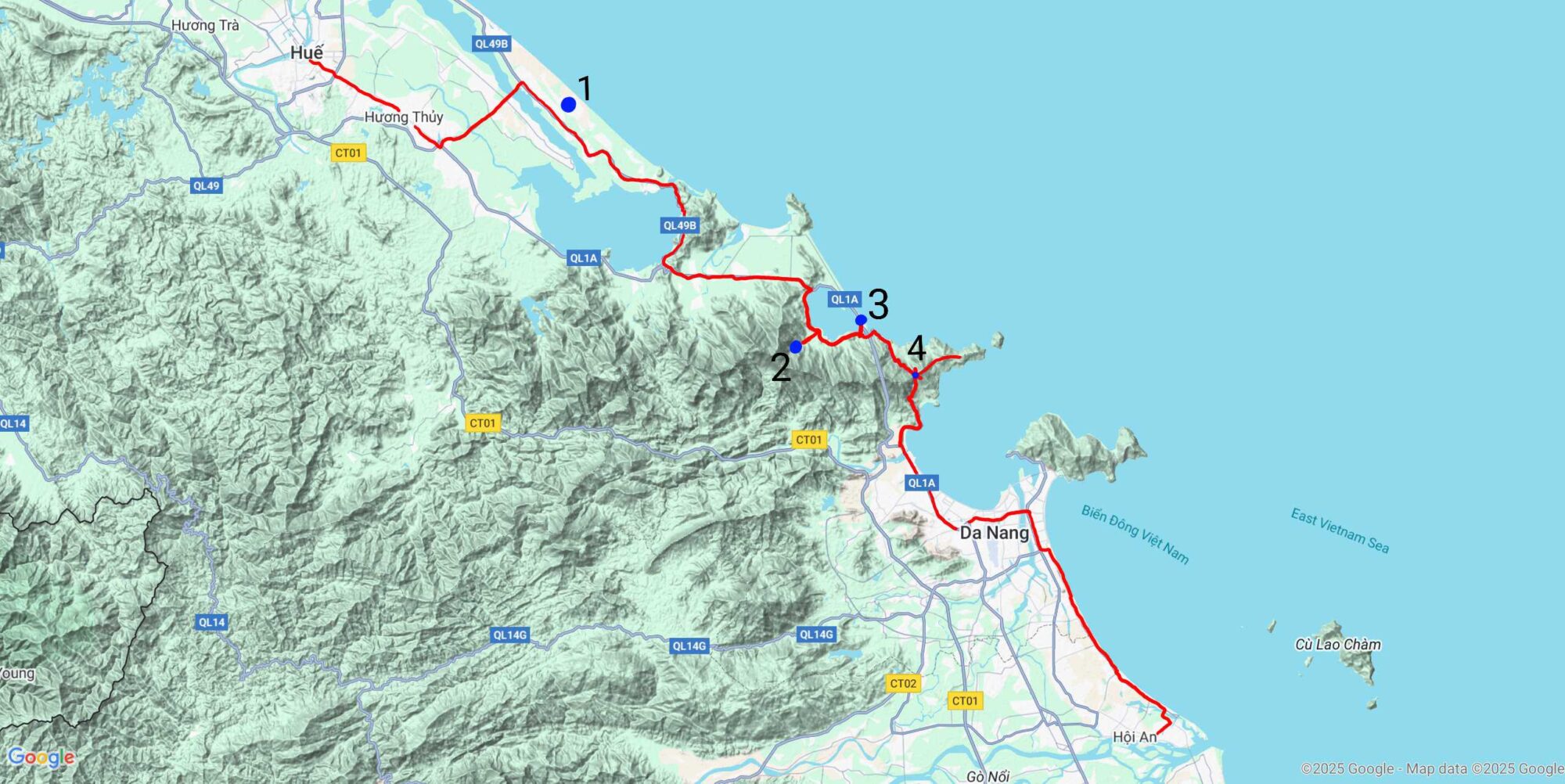
We spent the next four days (day 26 – day 29) in Hoi An. This town is known for tailors and custom-made clothes, so we took an opportunity, and Iris bought herself a few pieces of clothes. We also went for a ride on the river with coconut boats, we visited a food market with a local guide, and we joined a cooking class, where we learned to prepare spring rolls, salad, vegetable soup, and Vietnamese pancakes. Not only did we cook all that, but we could also eat it all.
The last night in our room was special—there was a small lizard that climbed from behind the picture on a wall at around midnight. This wasn’t too bad until Iris saw it; then all hell broke loose. We tried to scare the lizard out of the room, but then it hid behind the curtains, and we couldn’t find it anymore. Naturally, Iris didn’t want to sleep until she was sure that the lizard was gone, so she called the owner at almost 1 AM, and he came into the room with a scythe to chase it out. Maybe it’s best to just skip the details. At the end we had no idea where the lizard went, and Iris didn’t sleep much that night.
We left Hoi An in the evening of day 29 with a VIP sleeper bus to Dalat, having a 12-hour drive ahead of us.
Some more pictures:

